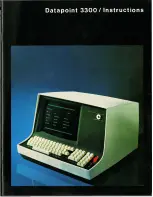
this is a common mistake. Failure to trap them will give create very strange, unpredictable
results.
Even though you don’t think your code will ever make a mistake, take advantage of feedback
that the Base Station provides. Failure to do so is a common mistake that eventually results in
serious program failure, sometimes due to hardware problems that go undetected.
•
Parse the Returned Strings thoroughly
. Don’t assume anything about the next response from the Base to
your program and look only for the partial string such as the ID only; parse the string returned completely and
be sure you are examining every possibility. Failure to do so is a common mistake.
•
Plan for expansion
. You may start small (1 base/1 Terminal) but try to create an application that will allow
for easy expansion and addition - especially of Terminals.
•
Use the Demo Programs
. The demo programs can at least allow you to see how the system functions and
whether you can anticipate any system-wide problems. The demo programs should also be used as a
response-time benchmark.
Failure Planning
Hardware Failures
Let’s assume that each part of the system has failed. How are you going to know what has happened and
how are you going to recover?
•
The most frequent failures are at the Terminal level. If a Terminal has a hardware failure, it will not be able to
SIGN OUT. It is possible for the Terminal operator to press the ON/OFF key or the F1 key by accident,
forcing the Terminal to SIGN OUT - sometimes in the middle of a transaction. This happens at battery-
charging time also. You need to plan for partial transactions - do you trash the data you do have and start over,
or pick up where you left off?
•
Keep in mind that if a Terminal has SIGNED OUT in mid-transaction, the Base Station clears any pending
message for that Terminal before it will allow it to SIGN ON again. Make allowances to re-send messages or
prompts that were cleared upon SIGN ON if necessary.
•
If a Base Station has a hardware failure, neither the Terminal nor the host computer will be able to
communicate with it. When the Base Station comes back on-line, it sends a “Base Station Initialized”
message back to the host, letting the host know that it must re-initialize all Terminals and pick up any
incomplete transactions.
Operator Errors
•
Plan on your operator walking out of range and going to lunch in the middle of a transaction. What do you do
with the data you do have, and where are you going to start up again?
•
Let’s say your operator is SIGNED ON and decides it’s time to take a break. Instead of pressing the F1 key to
SIGN OUT, he presses the OFF key. Pressing the OFF key is OK (it will SIGN him OUT) but there is a delay
until the SIGN OUT is acknowledged. Because of the delay, the operator might think he didn’t press the key
hard enough and press it again - this time actually powering down the Terminal
before
the SIGN OUT was
complete. If this happens, you need to plan to
re-send
the last prompt to the Terminal when he SIGNs ON
again.
Summary of Contents for 7000 Series
Page 1: ......
















































